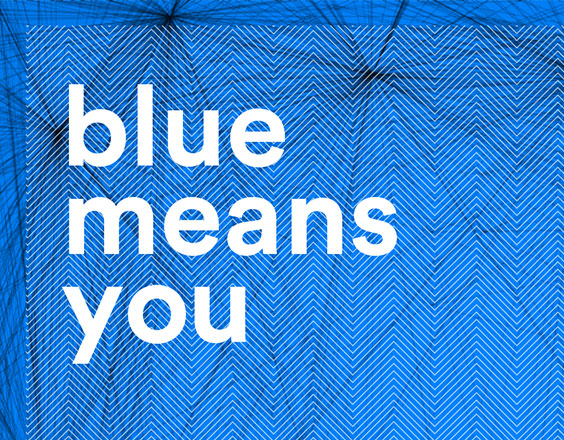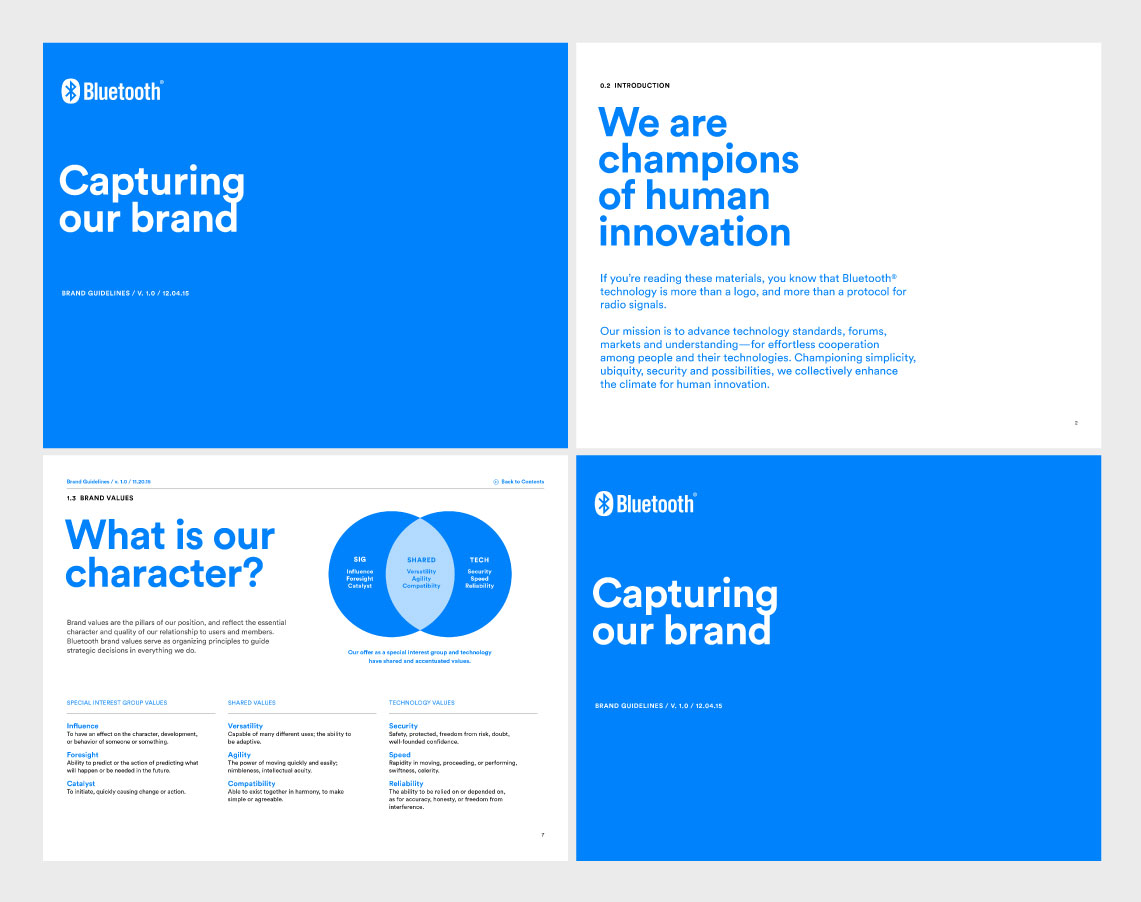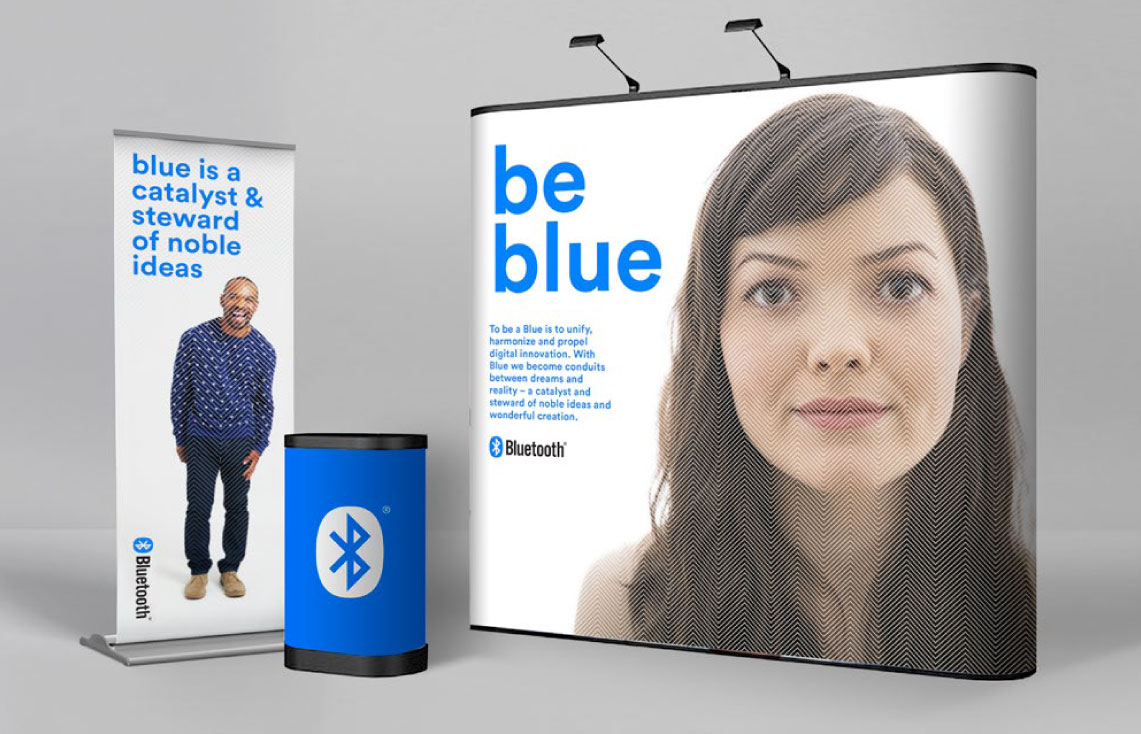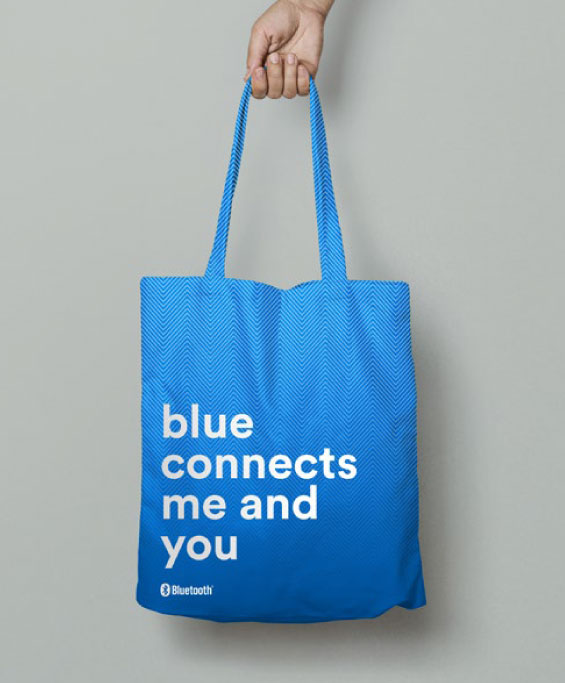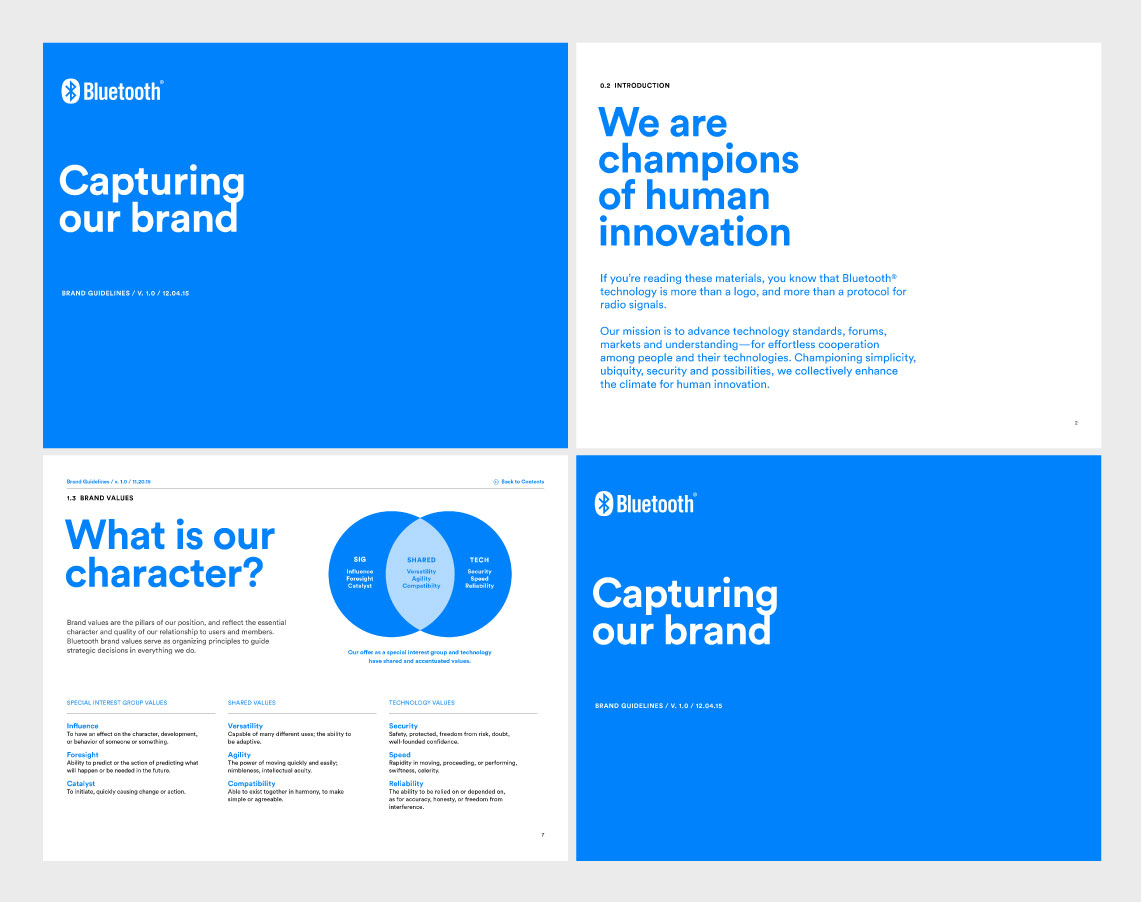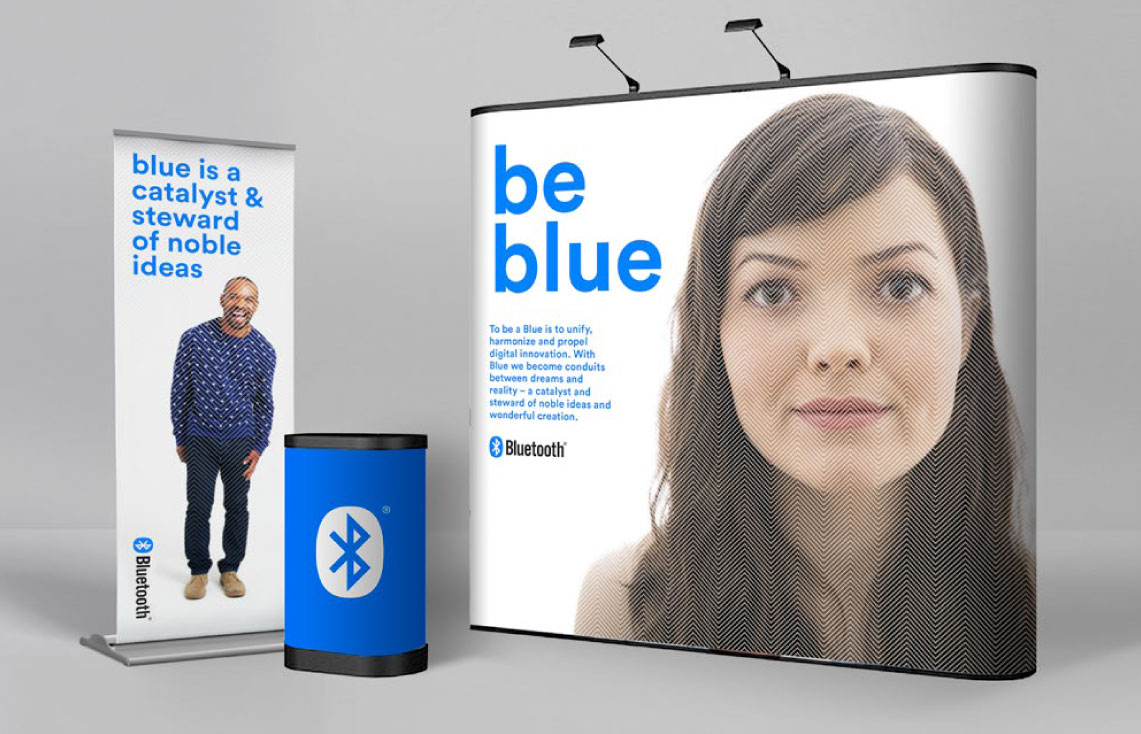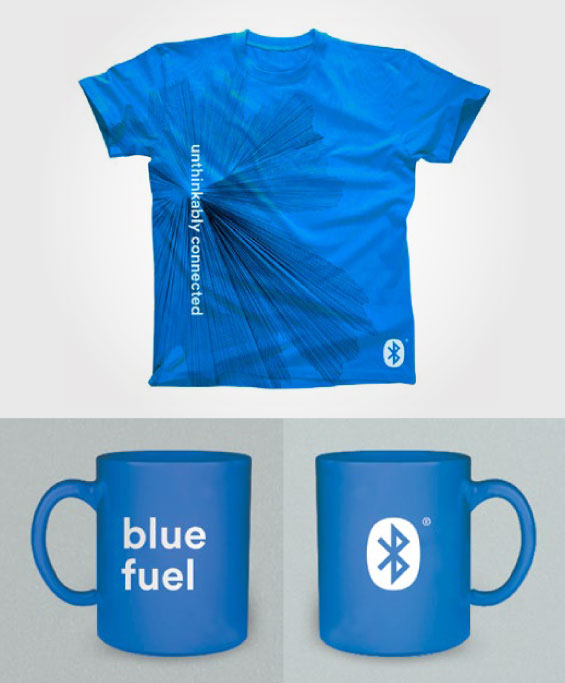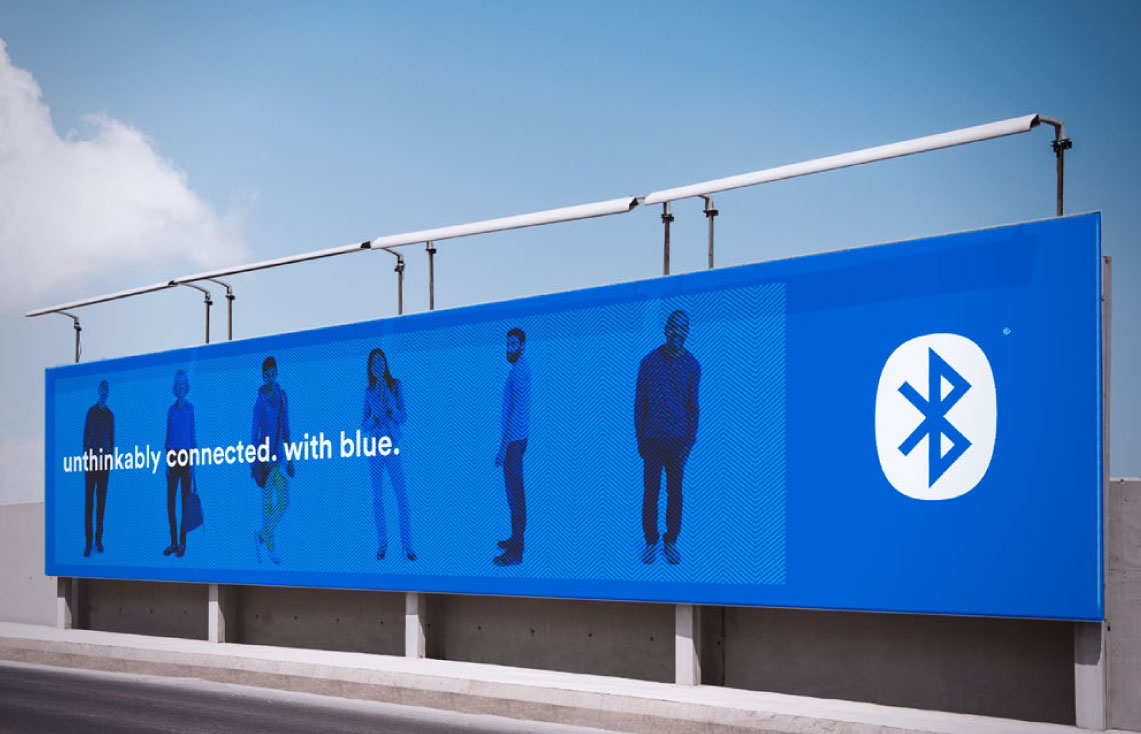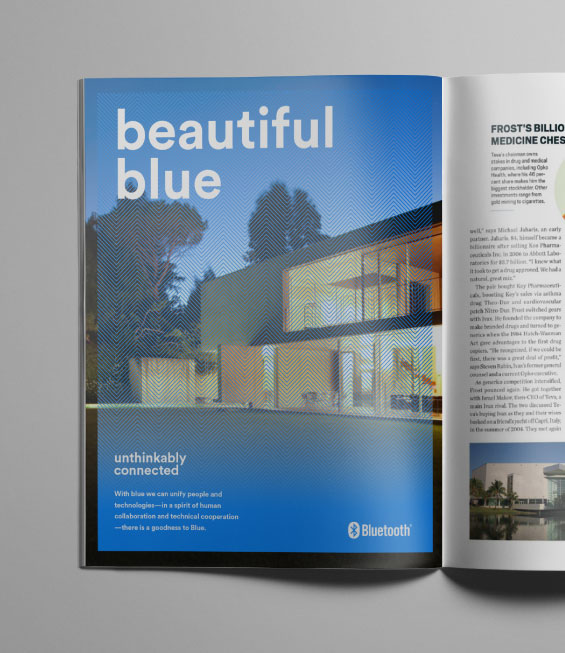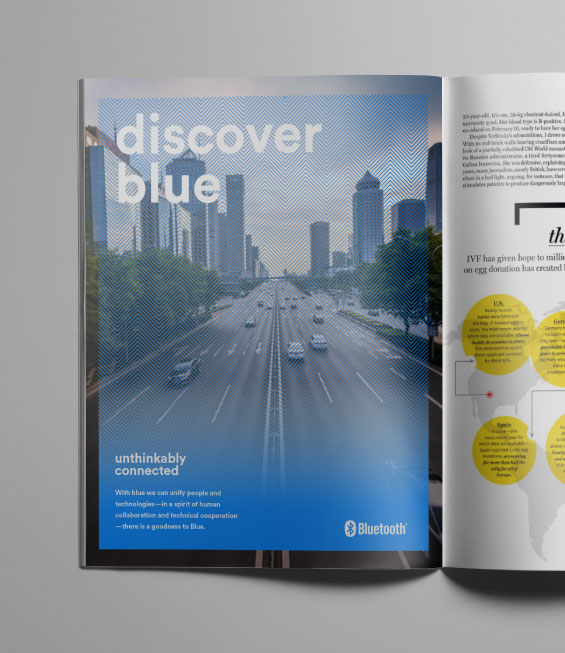A new look and a declaration to be the formative technology for the Internet of Things. Bluetooth’s brand refresh rolls out at CES.
Background
Since its revelation in 1998, Bluetooth has championed the idea that innovations can accelerate faster, and technologies can reach further, if everyone and everything worked together. Found today on billions of devices around the world, we represent an essential technology that makes everyday experiences more enjoyable, rewarding, safe and social. Today Bluetooth is one of the world’s most recognized, trusted and influential brands.
The name Bluetooth came from a tenth century Danish King, Harald Blåtand or, in English, Harold Bluetooth. As the story goes, King Blatant helped unite warring Nordic tribes, in part by creating a common language between them. Similarly, Bluetooth technology was created as an open standard to allow connectivity and collaboration between disparate products and industries.
A non-profit organization, the Bluetooth Special Interest Group (SIG) is the caretaker and creator of the core specification and services, ensuring the specification and services work to the highest interoperability standards.
Challenge
Bluetooth faced a strategic challenge – though one that many organizations might consider enviable. Global research showed us the Bluetooth name was ubiquitous, one of the world’s best known and trusted brands. Prized for simplicity and versatility, Bluetooth became the assumed unifying force for relatable technologies. It just works. At the same time, the brand was highly associated with legacy applications, including earbuds, car audio and smart phone connectivity. While Bluetooth adoption continued to accelerate, emerging technology environment – like the Internet of Things (Iot) – required the organization to profoundly consider its technical innovation pathway, member relationships and brand position, as an investment in the future.
Stoke conducted a comprehensive strategy program for Bluetooth, including market research, competitive audit, business visioning and brand experience audit.
Outcome
While other wireless standards sought to carve out niches based on discrete technical advances, Bluetooth’s differentiable strength came from the 20,000+ members committed to innovation in the community, and the technology’s extensibility from the car and phone, to industrial and in-home applications through the IoT.
Working with Bluetooth’s senior executives, Stoke developed a new brand position and identity system. The brand position emphasizes the organizational character of Bluetooth, as a “Civic Enterprise” – to unify, harmonize and propel digital innovation. The brand champions that idea that, through collective creation and technical standards, the Bluetooth community would assure, simplify, secure and enrich the experience of users through the cooperation of closely-connected technologies.
